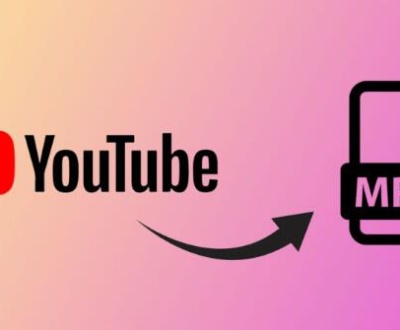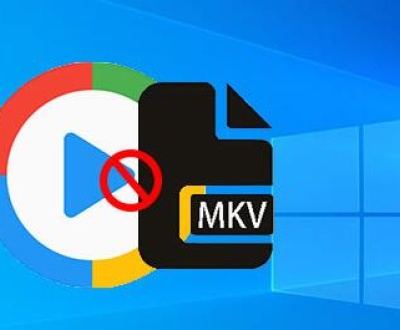To explore why the audio on your flash drive might be so quiet, it’s important to understand several potential factors that could contribute to this issue. These could range from problems with the audio file itself, the device playing the file, the flash drive’s storage settings, or software-related configurations.
1. Audio Volume Issues
When it comes to audio files on a flash drive, one of the most frustrating issues users encounter is audio that is too quiet. Whether you’re listening to music, watching videos, or reviewing voice recordings, audio that lacks volume can detract from the overall experience.
The causes for quiet audio can stem from a wide variety of sources, ranging from file-related issues to hardware settings. By understanding the problem in-depth, you can narrow down the potential causes and apply solutions that will help restore your audio to its normal volume. This guide is designed to walk you through the entire process, from troubleshooting common causes to providing advanced tips for fixing the issue.

2. Common Causes of Quiet Audio on Flash Drives
Before diving into solutions, it’s essential to consider the most likely reasons why your audio might be quiet. These can be broken down into a few categories: issues with the audio file, the flash drive, playback device settings, software players, or even data corruption.
2.1 Audio File Issues
The most basic explanation for quiet audio on a flash drive could be that the audio file itself is too quiet. Audio files have a set volume level, and if they were recorded or exported at a low volume, no matter how much you adjust your playback settings, they’ll remain quiet. There are also specific file types and codecs that can sometimes produce quieter sound than others.
Some possible issues include:
Low initial recording volume: If the audio was recorded at a low gain, it may not produce sufficient volume during playback.
Audio format or codec limitations: Certain formats, such as MP3 or AAC, may not handle volume adjustments as well as others, and some codecs may cause the audio to sound quieter due to compression.
Sound clipping or normalization: Sometimes, audio may be normalized (increased or decreased to a target volume level), which can unintentionally lower its overall volume.
2.2 Flash Drive Performance
If the audio files on your flash drive play with irregular volume, it could be an issue with the flash drive itself. Flash drives, especially older models or those with limited capacity, can sometimes experience performance issues that affect how data is read or transferred. The slow speed of older flash drives might lead to distorted or uneven playback of audio files.
Another factor could be the file system format used on the flash drive. If your flash drive is formatted with an outdated or incompatible file system, such as FAT32 or exFAT, it may affect the performance of certain files, including audio. While rare, some flash drives may have built-in audio-processing software that could affect the volume.
2.3 Playback Device Settings
Your playback device (whether it’s a computer, stereo system, phone, or MP3 player) plays a significant role in determining the volume of audio. If your flash drive is plugged into a device with improperly configured settings, it may result in quiet audio. Here are some possible device-related causes:
Volume settings: The most common reason for quiet audio is simply that the volume on the playback device is set too low.
Audio output configuration: Some devices may route audio through lower-volume output options (like headphones or auxiliary connections) by default.
Mismatched audio settings: Your device may have specific audio enhancements or settings that need to be adjusted for optimal playback, such as equalizer settings or volume normalization features.
Outdated drivers or software on the playback device may cause issues with audio output.
2.4 Software or Media Player Problems
Media players and software on your computer or device play a significant role in determining how audio is played back. Sometimes, the media player itself might be causing the volume issue. For instance:
Outdated software: If your media player or audio software is outdated, it may not function optimally, affecting the audio output.
Audio settings within the player: Most media players, like VLC or Windows Media Player, come with their own audio settings. You may have inadvertently changed settings such as the balance, volume normalization, or surround sound effects that are lowering the overall volume.
Codec support: Some media players may not fully support the audio codec used in the file, resulting in low-volume playback or distorted sound.
2.5 File Transfer or Corruption Issues
It’s also possible that your audio files were not transferred properly onto the flash drive. Data corruption during the transfer process could cause incomplete or corrupted files that play with lower volume or not at all. This can happen for several reasons:
Interruption during file transfer: If the transfer process was interrupted (e.g., the flash drive was removed prematurely), the file could be damaged.
File system issues on the flash drive: If the flash drive has bad sectors or errors in its file system, it could result in corrupted or incomplete audio files.
Outdated USB port or cable: If you used an old or damaged USB cable, the transfer process could be faulty, leading to files that are incorrectly stored and played back at low volume.
3. Potential Solutions to Fix the Quiet Audio
Now that we’ve explored some of the possible causes of quiet audio, let’s look at the solutions. These fixes will vary depending on the issue, but they cover a range of possibilities.
3.1 Checking the Audio File and Format
If the issue is with the audio file itself, you can check the file’s properties and format. Here’s what you can do:
Check the file volume: Use an audio editing program (like Audacity) to open the file and analyze its volume. If it’s too quiet, you can normalize the audio to increase the volume.
Try a different format: Sometimes, converting the audio file to a different format (e.g., MP3 to WAV) may help with volume issues. Use a trusted converter tool like Audacity, HandBrake, or another audio converter to re-export the file.
Repair the file: If the file is corrupted, consider using file repair software or converting the file to a different format, which might resolve the issue.
3.2 Ensuring Proper Flash Drive Functionality
Test the flash drive to ensure that it is working correctly:
Test on different devices: Try playing the audio from your flash drive on different devices to see if the problem persists. This will help you determine if the issue lies with the flash drive or the playback device.
Check the file system: If the flash drive is formatted with an outdated file system, such as FAT32. try reformatting it to a more modern system like exFAT or NTFS (if compatible with your device).
Run a health check on the flash drive: Use diagnostic tools to check for errors on the drive. This can help you determine if the issue is caused by corrupted or damaged sectors on the flash drive.
3.3 Adjusting Playback Device Volume Settings
Check device volume settings: Ensure that the volume is turned up on the playback device, and that any physical volume controls (on speakers, headphones, or the device itself) are adjusted correctly.
Adjust audio output settings: Check if the device is outputting audio through the correct port (headphones, speakers, etc.), and make sure that the audio settings in the device’s control panel or system preferences are configured for optimal output.
Check for software equalizer or volume normalization settings: Disable any software or device features that might limit audio volume, such as automatic volume leveling or equalizer settings.
3.4 Using a Different Media Player
Try playing the audio with a different media player. Some players may have better support for certain audio formats and could resolve issues with quiet audio. Popular media players like VLC, Winamp, and Foobar2000 are worth trying if you haven’t already.
3.5 Repairing or Re-transferring Files
If you suspect that the files on your flash drive were corrupted during transfer:
Re-transfer the files: Copy the files from their original source onto the flash drive again, ensuring there are no interruptions in the process.
Use file repair software: Tools like MP3 Repair Tool or Audio Repair can help fix corrupted files and restore them to their correct state.
4. Advanced Troubleshooting Techniques
If none of the basic solutions work, you can proceed with advanced troubleshooting techniques.
4.1 Testing the Audio on Different Devices
To rule out hardware issues, test the audio on different devices. This can help you determine whether the problem lies with the flash drive, the playback device, or the file itself.
4.2 Reformatting the Flash Drive
If your flash drive seems to be the problem, you can try reformatting it. This will erase all files on the device, so back up your important data before proceeding. Reformatting may help fix any issues with corrupted or damaged sectors.
4.3 Investigating Audio Compression or Loss
If the audio files are highly compressed (such as low-bitrate MP3s), you might want to consider using higher-quality versions or reducing the compression to improve the sound quality.
5. When to Seek Professional Help
If none of the above steps resolves the issue, it may be time to consult a professional. Audio professionals, data recovery experts, or device technicians may be able to diagnose the problem more accurately and offer solutions tailored to your specific situation.
About us and this blog
Panda Assistant is built on the latest data recovery algorithms, ensuring that no file is too damaged, too lost, or too corrupted to be recovered.
Request a free quote
We believe that data recovery shouldn’t be a daunting task. That’s why we’ve designed Panda Assistant to be as easy to use as it is powerful. With a few clicks, you can initiate a scan, preview recoverable files, and restore your data all within a matter of minutes.
Subscribe to our newsletter!
More from our blog
See all postsRecent Posts
- How to repair my usb flash drive 2025-05-09
- How to search folder in file explorer 2025-05-09
- How to search for duplicates in file explorer 2025-05-09

 Try lt Free
Try lt Free Recovery success rate of up to
Recovery success rate of up to









